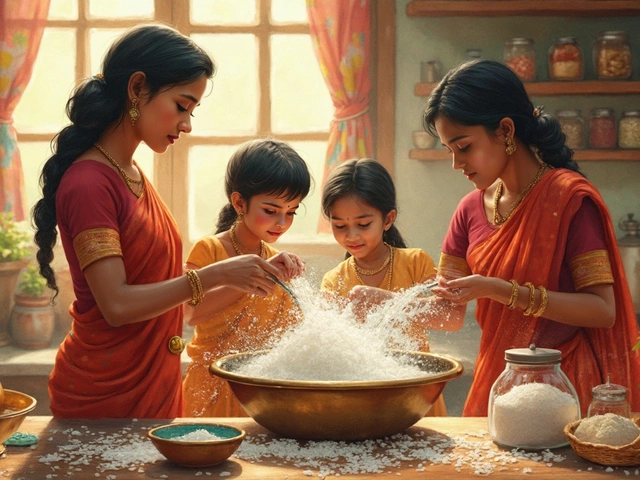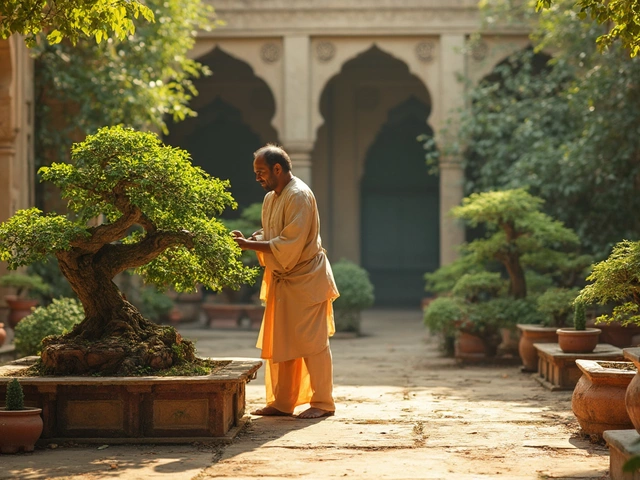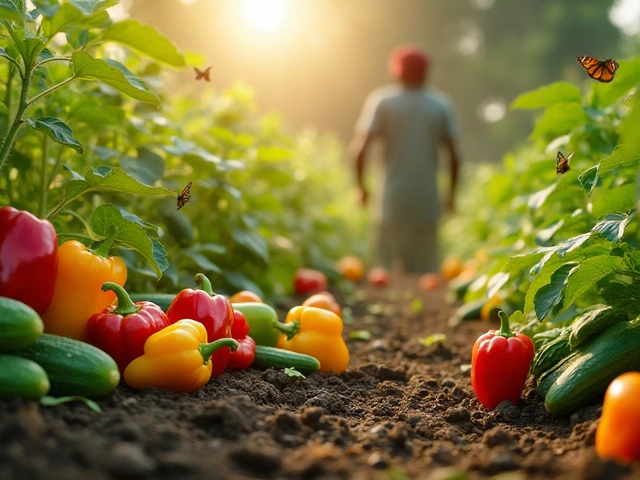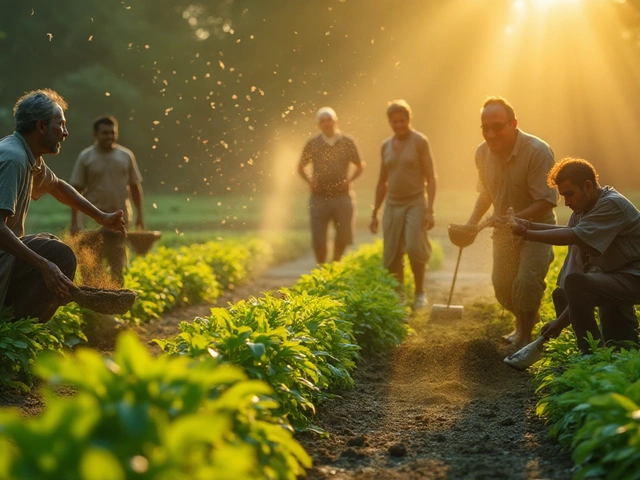When your garden plants look skinny or tired, it’s usually not their fault—it’s the soil. Good soil isn’t just a pile of dirt. It’s more like a buffet for plants, packed with food, water, and air. If you want those big, bold veggies and blooms, you need to give your soil an upgrade.
Start by thinking about soil as a living thing. Stuff like compost, worm castings, or even old leaves feed all the tiny bugs and microbes underground, and those guys work overtime to break things down and make nutrients easier for roots to grab. So, if you’re dealing with hard, sandy, or sad-looking soil, you can turn things around by bulking it up with the right stuff.
But hold up—don’t just start dumping in random stuff. If you skip a soil test, you’re playing a guessing game. Sometimes the soil needs more organic matter, sometimes it needs minerals, or sometimes it even needs a break from being overworked. A simple test kit from your garden center gives you a starting point—no lab coat required.
- Why Bulking Up Soil Matters
- Test Before You Toss Stuff In
- Compost: The Secret Ingredient
- Add Organic Matter (Not Just Any Kind)
- Don’t Ignore Minerals
- Easy Habits for Long-Lasting Soil Health
Why Bulking Up Soil Matters
If you’ve ever wondered why your garden doesn’t take off like those shows on TV, nine times out of ten it’s about your soil. Bulking up your soil isn’t just for serious gardeners—it’s for anyone who wants tomatoes bigger than golf balls and flowers that actually look happy.
Healthy soil is like an all-you-can-eat buffet for plants. The better the buffet, the stronger and healthier your plants will be. When soil has enough organic matter and nutrients, roots can dig in deep, hold onto water, and suck up what they need to keep growing. Skip this step, and even the best seeds are just wasting their time.
You might not realize that just one teaspoon of good soil contains more living things than there are people on earth. These mini workers—bacteria, fungi, earthworms—bust their tails recycling old plant stuff into new plant food. When you bulk up your soil, you’re basically hiring an underground crew to make your garden work like magic.
Compacted, poor soil can’t hold water and dries out fast. Sandy soil drains too quickly and nutrients just wash away. Adding organic matter slows this loss down, gives roots something to grab, and creates air pockets that help keep the whole system running smoothly.
- Rich garden soil can store up to 20 times more water than poor soil.
- Soil with higher organic matter supports more beneficial bugs—the kind that eat pests and help roots.
- A strong soil structure means less work for you: less watering, less fertilizing, less headache.
| Soil Quality | Water Holding (Gallons/Cubic Ft) | Plant Growth (Yield %) |
|---|---|---|
| Poor, Compacted | 0.5 | 50% |
| Sandy, Low Organic | 1 | 60% |
| Rich, Amended | 5-10 | 90-100% |
Bottom line: if you want to squeeze more out of your garden year after year, focusing on garden soil quality is where it starts. The soil you invest in now keeps giving back, way longer than any bag of store-bought fertilizer.
Test Before You Toss Stuff In
Before you start pouring compost, mixing in manure, or scattering fertilizers, pause for a minute—your garden will thank you. Testing your soil first saves money and stops you from wrecking your dirt by dumping in stuff you don't actually need. You wouldn’t try to fix your car without figuring out what’s wrong first, right? It’s the same with garden soil.
Grab a basic soil test kit at your local hardware store or garden center. Most home kits will check important things: pH (acid or alkaline level), and big nutrients like nitrogen, phosphorus, and potassium. If your plants keep flopping over or turning yellow, these numbers will tell you why. For the best accuracy, scoop up a few soil samples from different spots in your garden, then mix them together before testing.
- pH Level: Most garden plants like soil between 6.0 and 7.0. Too far outside that zone, and your plants just won’t eat right, no matter how much you feed them.
- Nitrogen (N): Needed for leafy growth. Not enough, and your garden looks like a sad salad.
- Phosphorus (P): Helps with strong roots and flowers. If you want more blooms, this is key.
- Potassium (K): Makes plants tough and helps fruit develop. Weak tomatoes? Might be a potassium issue.
If you want next-level info, many county extension offices will test your soil for cheap or free. Their labs break things down even further (magnesium, calcium, and more). Below’s a quick look at what common soil test numbers look like for happy garden soil:
| Property | Ideal Range | What Happens If Too Low | What Happens If Too High |
|---|---|---|---|
| pH | 6.0 – 7.0 | Poor growth, yellow leaves | Stunted growth, nutrient lockout |
| Nitrogen (N) | 40 – 60 ppm | Pale, yellowing leaves | Excessive leafy growth, no fruit |
| Phosphorus (P) | 30 – 50 ppm | Poor roots, few flowers/fruit | Stunted roots |
| Potassium (K) | 100 – 150 ppm | Weak stems, small fruit | Salt buildup, poor uptake of other nutrients |
Armed with this info, you can actually fix what your soil’s missing—instead of just crossing your fingers and hoping for the best. A quick test once a year is all it takes. If your last soil test is older than your smartphone, it’s time for a new one.
Compost: The Secret Ingredient
If you ask any seasoned gardener the fastest way to fix garden soil, they’ll hand you a pitchfork and point at the compost pile. Compost is basically nature’s recycling program, turning food scraps, leaves, and grass clippings into black, crumbly stuff your plants crave.
Here’s what makes compost a garden soil game-changer:
- Adds nutrients: Compost releases nitrogen, phosphorus, and potassium—the big three plants need to grow strong.
- Improves texture: Packed clay loosens up, sandy soil holds water better, and everyone wins. Your soil feels softer, drains better, and roots grow deeper.
- Feeds the life underground: Microbes and earthworms flock to compost, making nutrients easier for plants to absorb.
- Reduces disease: Good compost fosters healthy soil microbes, which outcompete many of the bad guys that can make plants sick.
Quality matters. Homemade compost is golden if you get the right mix: about two parts brown stuff (leaves, shredded cardboard) to one part green stuff (kitchen scraps, lawn clippings). If you’re buying, look for ‘finished’ or ‘cured’ compost—nothing chunky or still hot from breaking down. Smell should be earthy, not sour or rotten.
Don’t overdo it. Mix in 1–2 inches of compost onto the soil surface a couple times a year. You’ll notice a difference the next growing season.
| Nutrient | Typical Range (%) |
|---|---|
| Nitrogen (N) | 1.0 – 2.0 |
| Phosphorus (P) | 0.3 – 0.5 |
| Potassium (K) | 0.5 – 1.0 |
Got big clumps or unfinished compost? Toss it back in the pile for another month, then give it another shot. Your patience will pay off—the best gardens usually sit on top of the best compost.
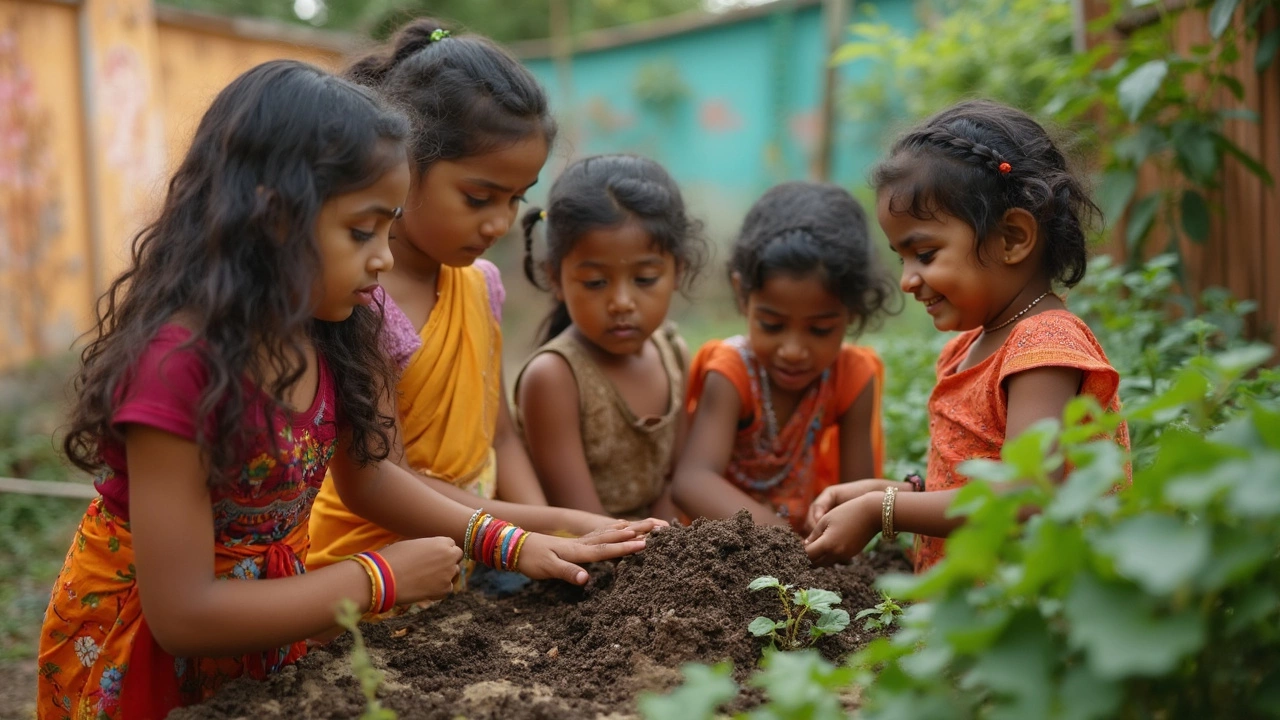
Add Organic Matter (Not Just Any Kind)
Here’s the deal: Not all organic matter is going to supercharge your garden soil. Some stuff breaks down fast and feeds the soil life right away, while other stuff hangs around for a long time and keeps soil airy and loose. The trick is using the right combo, and you don’t need to overthink it.
Let’s break it down. Finished compost is the gold standard. It's loaded with nutrients and helps soil hold water, which makes roots happy in a dry spell. Well-rotted manure (like old cow or chicken manure, not the fresh stuff) is another solid pick, but go easy—high-nitrogen manure can burn tender plants if it isn’t aged at least six months.
Mulches, like shredded leaves or grass clippings, break down slower. They act like a slow-release snack for your beds, plus they keep weeds from taking over. Just skip walnut leaves or anything sprayed with weed killer. And don’t use meat, dairy, or oils—they attract critters and make a mess.
- Compost: Try to use about 1–2 inches each year, spread over the soil surface before you plant.
- Well-rotted manure: Add up to 1 inch, but only when you’re not planting right away, since it still packs a nutritional punch.
- Leaf mold or shredded leaves: These build structure and keep soil soft, so mix them in, especially if your dirt feels heavy and sticky.
Now, if your soil’s sandy, all this organic matter helps it hang onto water better. For clay soils, it lightens things up and gives roots room to breathe. Win-win.
| Organic Matter | Breakdown Rate | Main Benefit |
|---|---|---|
| Compost | Fast | Adds nutrients immediately |
| Manure (aged) | Medium | Boosts fertility, adds microbes |
| Shredded leaves | Slow | Improves structure, moisture |
Avoid peat moss if you can—it’s usually shipped from far away and isn’t very renewable. Stick with homegrown stuff when possible. And don’t make the rookie mistake of piling on too much too fast. Overloading your garden beds can actually smother roots or encourage diseases.
So, focus on mixing in the good stuff every year, and your soil will get better—and your plants will show it.
Don’t Ignore Minerals
Most folks think tossing in compost or manure is enough for great garden soil, but the mineral side of things gets ignored. Plants need more than just organic matter—they need minerals like calcium, magnesium, and potassium to really thrive. If your tomatoes get blossom end rot or your leaves look spotty, there might be a mineral shortage going on.
The three big ones to keep an eye on are:
- Calcium: Stops blossom end rot in tomatoes and peppers and helps roots grow stronger.
- Magnesium: Needed for making chlorophyll, the stuff that makes leaves green. Without it, leaves get yellow or pale between the veins.
- Potassium: Helps plants stay sturdy, fight off disease, and grow bigger fruits and flowers.
If you’re serious about strong soil, get a bag of garden lime to boost calcium, epsom salts to fix a magnesium shortage, or greensand for a gentle potassium top-up. Just don’t go wild—overdoing minerals can backfire. Follow package instructions or, better yet, your soil test results.
Curious what your soil really needs? Here’s what’s typical for healthy garden soils in the US (per 100 square feet):
| Mineral | Ideal Range | Common Sources |
|---|---|---|
| Calcium | 1000-2000 ppm | Garden lime, gypsum, crushed eggshells |
| Magnesium | 100-200 ppm | Epsom salts, dolomite lime |
| Potassium | 150-250 ppm | Greensand, wood ash, kelp meal |
Stick with these sources if you’re just starting out. If you use wood ash, go easy—it raises soil pH in a hurry. If you’re composting kitchen scraps, eggshells add a slow trickle of calcium, so don’t trash them. It all stacks up over time and keeps your dirt working harder, season after season.
Easy Habits for Long-Lasting Soil Health
You don’t need a science degree to give your soil a boost year after year. Just develop a few simple habits and stick with them. Plants (and your back) will thank you later.
First, try not to leave beds bare for long. Naked soil bakes in the sun and can lose nutrients—plus, weeds love that. Cover crops like clover or even a layer of straw or leaves can hold moisture and smother weeds. Bonus: cover crops pulled up at the end of the season also become compost material.
Don’t walk in your planting beds if you can help it. Heavy feet squish air out of the ground, which roots and microbes both need. Use stepping stones or simply plan paths so you’re not tamping down the best planting spots each time you water or weed.
Rotate your crops. Even in a small garden, changing up where you grow tomatoes, beans, or lettuces each year helps stop bugs and diseases from taking over. Certain plants (like peas and beans) even add a bit of free nitrogen back into the mix when you move them around.
When you add compost, do it regularly but with a light hand. A half-inch once or twice a year is enough for most home gardeners. Overdoing it can actually mess with soil balance or wash away during heavy rain. If you spot worms or pill bugs chomping through organic stuff, that’s a good sign your garden soil is getting healthier.
Water smart, not just often. Deep, slow watering soaks soil like a sponge and encourages strong, deep roots. A quick sprinkle often just runs off and doesn’t do much for plants—or those hard-working soil critters.
Lastly, know when to leave things alone. Tilling and turning the earth is tempting, but too much digging can break apart helpful soil structure and harm microbes. Stick to gentle mixing if you need it, and let nature do as much of the work as possible.

